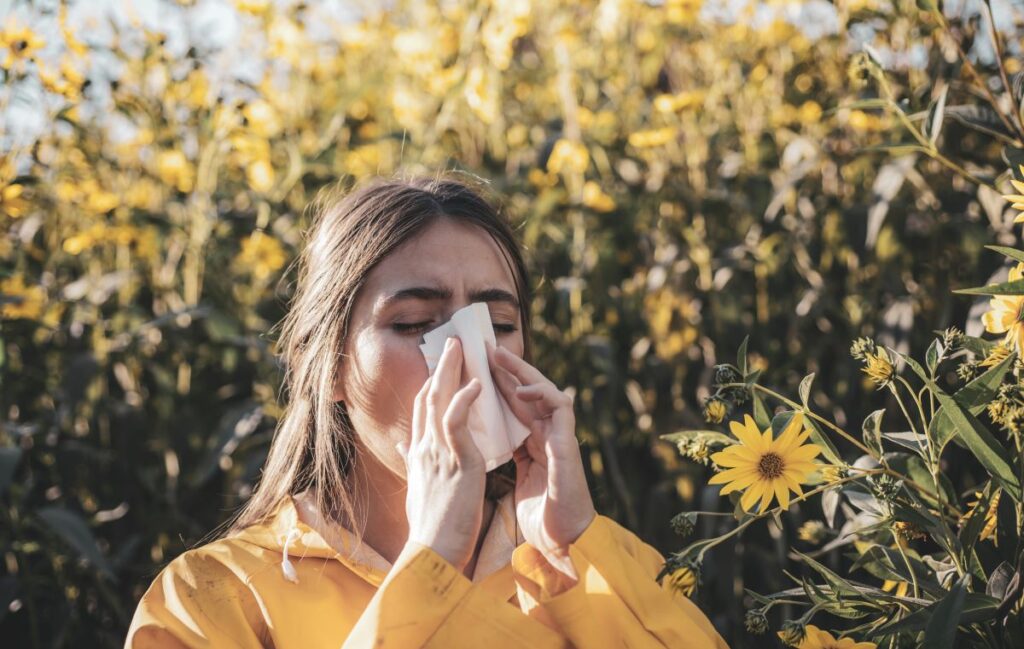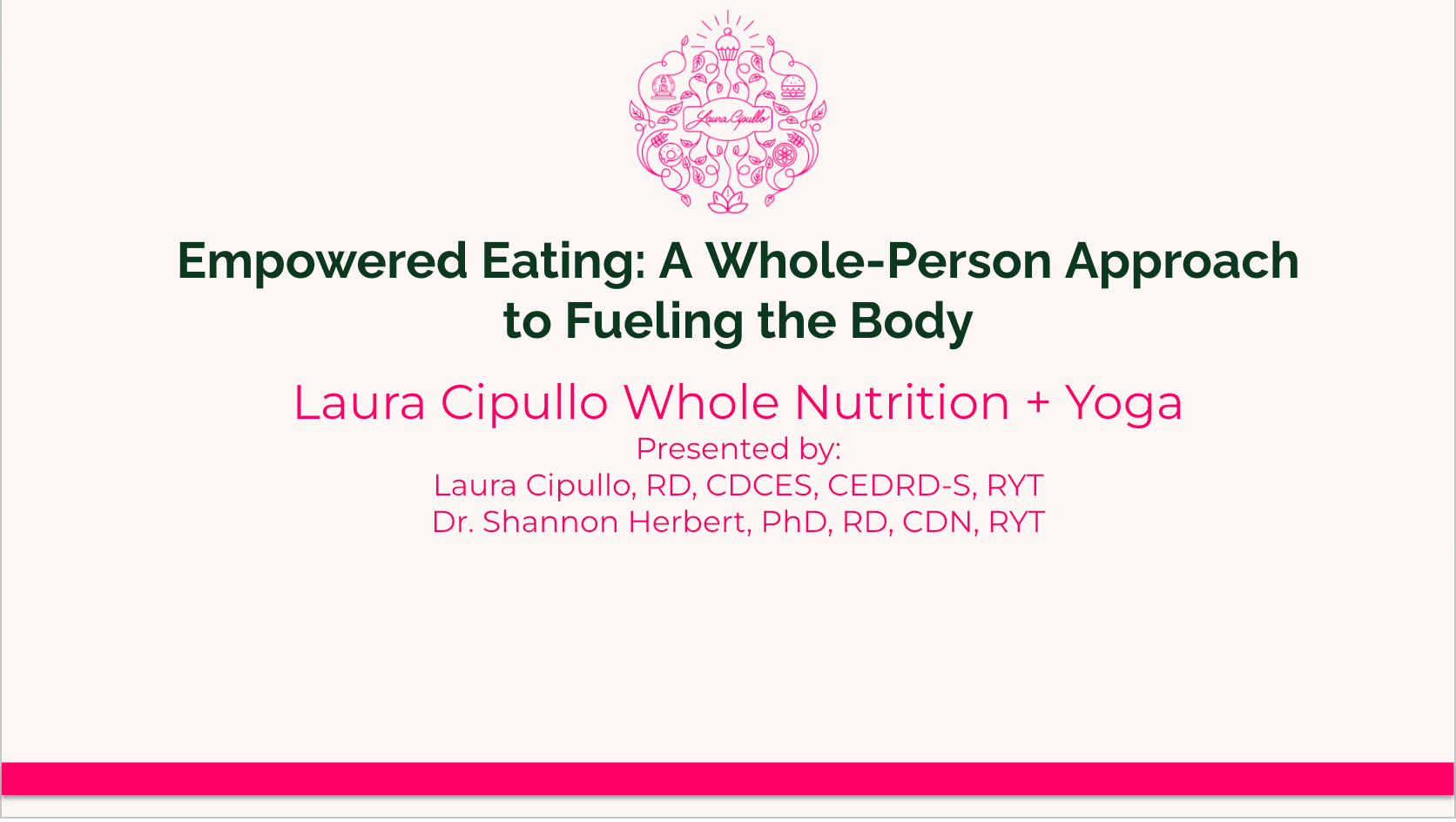Diet and Histamine: Managing Allergy Symptoms Through Nutrition

by Rebecca Jaspan, MPH, RD, CDN, CDCES
Spring is in the air and that means beautiful pink cherry blossoms, but also the rise of the dreaded allergy season. Even with Claritin and allergy shots, itchy eyes and runny noses are uncomfortable for anyone. Did you know that some foods produce more histamine in the body? By making certain changes in your diet, you may be able to reduce the amount of histamine your body makes and therefore manage your uncomfortable allergy symptoms.
Understanding Histamine’s Role in Allergies
Histamine is a chemical produced by our cells that plays a role in several major body systems including the immune, digestive, and neurological systems. As painful and annoying as histamine reactions are, they do have a purpose. Histamine is a signaling molecule that sends messages between cells and protects our body from foreign invaders. The inflammatory reaction sends white blood cells and other protective molecules to “fight” the invader, causing teary eyes, congestion in the nose, and swelling. Additionally, certain foods are histamine-rich and can trigger histamine reactions in those sensitive.1
Identifying Histamine Intolerance
Some individuals develop histamine intolerance due to a deficiency in the enzyme diamine oxidase (DAO). DAO breaks down histamine, so a deficiency in this enzyme keeps histamine in your body for longer. Some reasons you may have a DAO deficiency are due to medications that decrease DAO function or prevention production, gastrointestinal disorders, eating histamine-rich foods or foods that block DAO enzymes.2 Changes in food intake can prevent DAO enzyme from being blocked or decrease the amount of histamine you take in, calming the inflammatory effects and improving allergy symptoms.
High-Histamine Foods to Avoid
If you have bad allergies, decreasing the histamine-rich foods in your diet may help relieve your symptoms. Histamine levels in foods are challenging to quantify because even within the same food product, histamine levels can vary depending on how long a food as aged, its storage time, and whether it has additives.3 The following foods are known to have higher levels of histamine4:
- Fermented dairy, such as cheese, yogurt, sour cream, buttermilk, and kefir
- Fermented vegetables, such sauerkraut, kimchi, and pickles
- Fermented or cured meats, such as salami and sausages
- Fermented soy products, such as tempeh, miso, soy sauce, and natto
- Fermented grains, such as sourdough bread
- Kombucha, wine, beer, and champagne
- Vegetables like tomatoes, eggplant, and spinach
- Salted, frozen, or canned fish, such as sardines and tuna
- Vinegar
- Tomato ketchup
Some foods also trigger histamine release in the body. Those foods include alcohol, bananas, tomatoes, wheat germ, beans, papaya, chocolate, citrus fruits, nuts, and food dyes and other additives. In addition, drinks that block DAO production alcohol, black tea, mate tea, green tea, and energy drinks.5 Be mindful of eating leftovers as well. Histamine levels increase, especially in protein-rich foods, the longer they are stored in the refrigerator. It is recommended to store leftovers in the freezer and cook or freeze raw meat quickly to avoid high histamine levels.
Low-Histamine Food Recommendations
If you have histamine intolerance or are looking to decrease your allergy symptoms, incorporating low-histamine foods into your diet may help. Foods that are low histamine include fresh meat and fish, non-citrus fruits, eggs, gluten-free grains such as quinoa and rice, dairy substitutes such as coconut milk and almond milk, fresh vegetables except tomatoes, avocados, spinach, and eggplant, and oils such as olive oil.6
Think you may have histamine intolerance? Before eliminating any foods, be sure to speak with your doctor. A doctor will want to rule out other possible disorders or allergies that can cause similar symptoms. Your doctor can also test your DAO enzyme for a deficiency to better understand if a low-histamine diet is necessary or if a DAO enzyme supplement will help.7 If your doctor recommends a low-histamine diet, work with a registered dietitian to help you meet your individual nutrition needs while eliminating foods to improve your symptoms.
- Shulpekova YO, Nechaev VM, Popova IR, et al. Food Intolerance: The Role of Histamine. Nutrients. 2021;13(9):3207. Published 2021 Sep 15. doi:10.3390/nu13093207
- Schink M, Konturek PC, Tietz E, et al. Microbial patterns in patients with histamine intolerance. J Physiol Pharmacol. 2018;69(4):10.26402/jpp.2018.4.09. doi:10.26402/jpp.2018.4.09
- Sánchez-Pérez S, Comas-Basté O, Veciana-Nogués MT, Latorre-Moratalla ML, Vidal-Carou MC. Low-Histamine Diets: Is the Exclusion of Foods Justified by Their Histamine Content?. Nutrients. 2021;13(5):1395. Published 2021 Apr 21. doi:10.3390/nu13051395
- Moniente M, García-Gonzalo D, Ontañón I, Pagán R, Botello-Morte L. Histamine accumulation in dairy products: Microbial causes, techniques for the detection of histamine-producing microbiota, and potential solutions. Compr Rev Food Sci Food Saf. 2021;20(2):1481-1523. doi:10.1111/1541-4337.12704
- Manzotti G, Breda D, Di Gioacchino M, Burastero SE. Serum diamine oxidase activity in patients with histamine intolerance. Int J Immunopathol Pharmacol. 2016;29(1):105-111. doi:10.1177/0394632015617170
- Hakl R, Litzman J. Histamine intolerance. Histaminová intolerance. Vnitr Lek. 2023;69(1):37-40. doi:10.36290/vnl.2023.005
- Schnedl WJ, Enko D. Histamine Intolerance Originates in the Gut. Nutrients. 2021;13(4):1262. Published 2021 Apr 12. doi:10.3390/nu13041262







